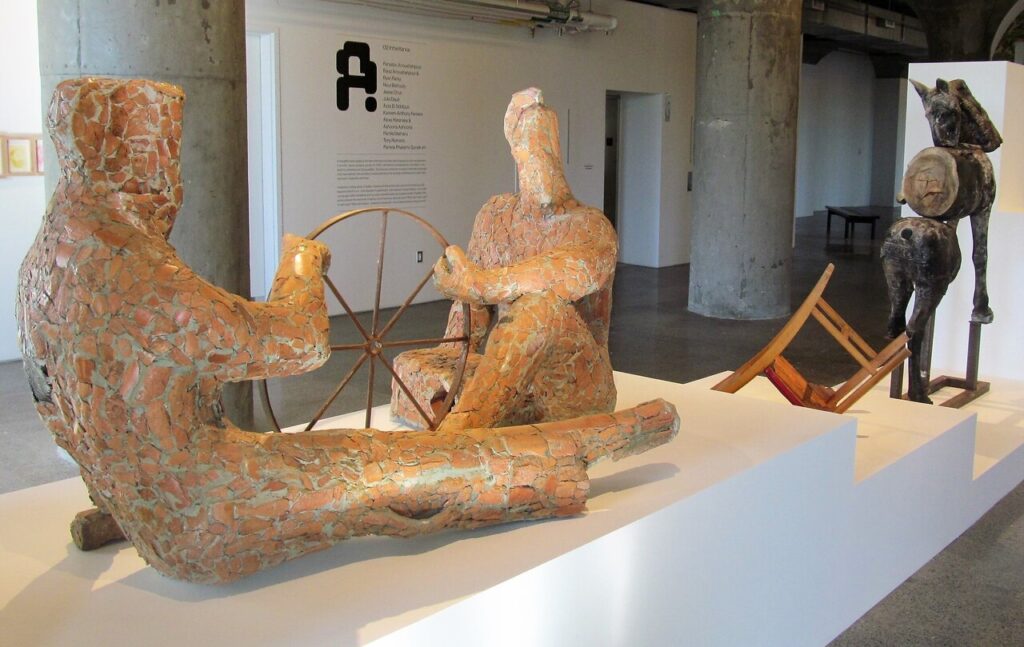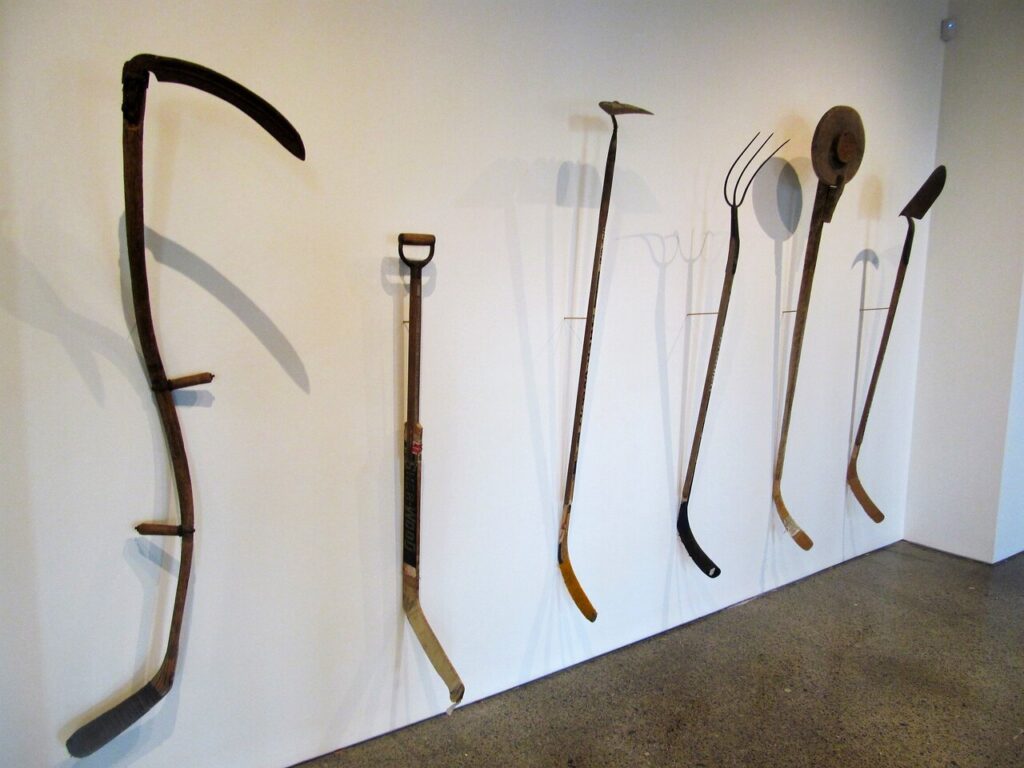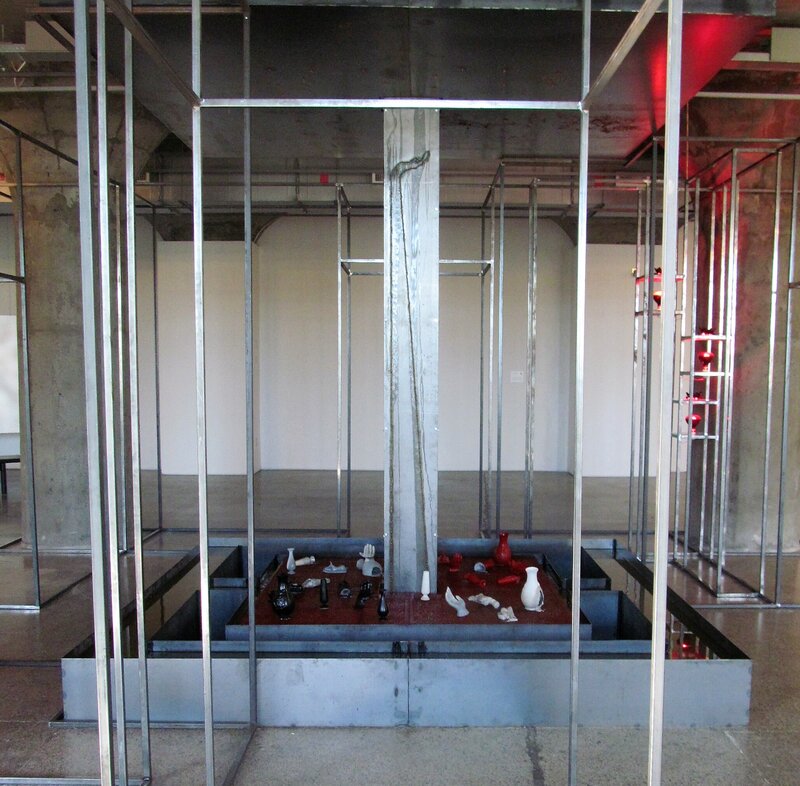Greater Toronto Art 2021 / MOCA Toronto’s Inaugural Triennial Survey Exhibition
This ambitious and wonderful project brings together 21 artists and collectives from across the GTA and thus the title of the exhibition. The curators spent a year and a half visiting over 40 studios of artists in an effort to pull together an eclectic mix of diverse artists whose work reflects the City of Toronto with work exhibited on MOCA’s three floors.
The artists successfully integrated their works within the architecture of the building and rather than looking at the building’s structural elements as impeding the art, turned around and complimented it. All the works have stories to tell and messaging that makes them even more attractive. The show is up for three months and is one of the strongest exhibits displayed at MOCA in its history. What also makes this MOCA exhibit unique is that most of the work in the exhibit were commissioned new works so the artists could work with the space allotted. Allow plenty of time to engage the entire display and read all the accompanying text. There is a hefty catalogue which gives additional information and is available for purchase.
GTA21 Installation view, MOCA, Toronto, 2021
At the media release presentation, MOCA Director Kathleen Bartels welcomed the press and introduced the exhibition as well as acknowledging the sponsors and thanking all the curators, artists and others who helped with its presentation.
Deputy Mayor and City Councilor Ana Bailao reminded us all that through the pandemic artists have suffered and that this exhibition was a good way to celebrate the work of Toronto artists while thinking of the importance of culture and MOCA to the fabric of the city.
Deputy Mayor and City Councilor Ana Bailao
BMO’s contribution of $1,000,000.00 certainly helped make such a great project possible. There were many partnerships that also helped shape the exhibit. Many of the works, such as Sahar Te’s Listening Attends (with a Toyota Tacoma), were not without their challenges as curator Rui told me. First sourcing such a vehicle and then getting it onto the floor of the gallery came with difficulties. The installation looks at the issue of how aggressive vehicles are used to control crowds. The artist uses her own voice as she explores how objects might sound.
Sahar Te, Listening Attends, 2003 Toyota Tacoma, speakers, black satin cover. Courtesy the artist. Installation view, MOCA, Toronto, 2021
One pleasant surprise was seeing Julia Dault’s work. I expected to see just painting but she had some large curtain-like pieces that could be pulled across the wall like some immense shower curtain (Final Call). One of the pieces was a digital version of a painting of hers on display on another floor and the others were photographic digital works. I was first introduced to her work when it was photographic and cleverly produced. I thought at the time that she was going to be an artist to watch.
Julia Dault, Through the Looking-Glass, 2021, acrylic and oil on canvas in painted wood frame. Courtesy Bradley Ertaskiran, Montreal; Marianne Boesky Gallery, New York and Aspen, CO; and China Art Objects, Mérida, Mexico. Installation view, MOCA, Toronto, 2021
In Huddled Sign by Jennifer Rose Sciarrino steel, limestone and marble is hand carved into the cells of yeast and displayed in steel baskets. It focuses our attention on wild yeast that is everywhere in foods and also can be the cause of infection. Tony Romano uses traditional carving and contemporary pieces to explore themes of secrecy.
Tony Romano, Between the Lilies and the Birds, 2021, found objects, wood, steel, ceramic tile. Courtesy of the artist. Installation view, MOCA, Toronto, 2021
Ploughing Liberty by Oluseye, uses found farm tools and hockey sticks. This work is a representation of the research the artist did on Black Loyalists and enslaved people who left New York to farm in Nova Scotia in 1783 – 1785. These works explore cultural icons and identity.
Oluseye, Ploughing Liberty, 2021, found farm tools, hockey sticks, brass dowels. Courtesy Patel Brown Gallery, Toronto. Installation view, MOCA, Toronto, 2021
The installation Double Gazebo (MOCA) by Native Art Department International explores a normal public place that is now cordoned off just like parks during the pandemic.
Native Art Department International, Double Gazebo (MOCA), 2021, painted steel and wood. Courtesy the artists. Installation view MOCA Toronto, 2021. Installation view, MOCA, Toronto, 2021
Fade into the sun by Azza El Siddique resembling a Nubian Burial Chamber encompassing MOCA’s concrete columns.
Azza El Siddique, Fade into the Sun, 2021, steel, bukhoor, sandaliya, slip cast ceramic, water. Courtesy the artist. Installation view, MOCA, Toronto, 2021
The entire exhibition is thoughtful, compelling and attractive in its presentation. A great recognition of Toronto’s artists and an exhibition worth visiting more than once to delve into its many parts.
Text and photo: Phil Anderson
*Exhibition information: GTA21, September 29, 2021 – January 9, 2022, MOCA, 158 Sterling Rd. Toronto. Museum hours: Wed, Thu, Sat and Sun 11 am – 6pm, Fri 11 am – 5 pm. Curated by guest curator Daisy Desrosiers, Adjunct Curator Rui Mateus Amaral, and MOCA Artistic Director November Paynter. The contributing artists include: Ashoona Ashoona and Alexa Hatanaka, Ghazaleh Avarzamani, Nour Bishouty, Jesse Chun, Tom Chung, Common Accounts – Igor Bragado and Miles Gertler, Julia Dault, Azza El Siddique, Kareem-Anthony Ferreira, Aaron Jones, Pamila Matharu, Native Art Department International – Maria Hupfield and Jason Lujan, Oluseye, Pamela Phatsimo Sunstrum, Jagdeep Raina, Tony Romano, Jennifer Rose Sciarrino, Walter Scott, Kara Springer, Sahar Te, and the collective of Parastoo Anoushahpour, Faraz Anoushahpour, and Ryan Ferko.








